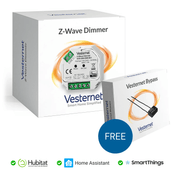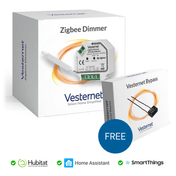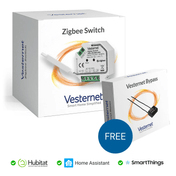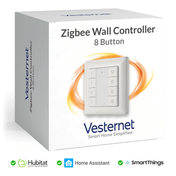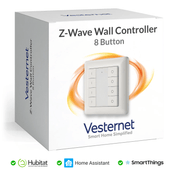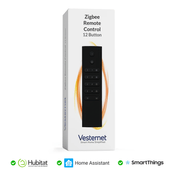Smart home automation success depends on reliable environmental data, yet many homeowners struggle to choose between simple, discreet sensors and comprehensive monitoring solutions that provide detailed insights. The wrong choice can leave your automation feeling incomplete or overwhelmingly complex.
This comparison will help you decide whether the streamlined approach of the Aeotec TriSensor or the comprehensive monitoring capabilities of the MCO Home Multi Sensor better suits your smart home automation goals. As the UK's leading Z-Wave specialist with years of hands-on experience testing and implementing smart home solutions, Vesternet provides expert guidance to help you make the right choice for your specific needs.

The Aeotec TriSensor: Minimalist Design Meets Essential Functionality
The Aeotec TriSensor proves that exceptional home sensors don't require complexity. This ultra-compact device measures just 1.77 inches and weighs only 50 grams, yet packs three essential monitoring capabilities into its diminutive frame. The integrated infrared motion detectors provide reliable occupancy sensing up to 7.5 metres, whilst temperature monitoring maintains accuracy within ±1°C across a range from -10°C to 50°C.
Core Sensor Capabilities
- Motion detection with adjustable sensitivity to avoid false alarms from pets
- Temperature monitoring for climate control automation
- Light intensity measurement for intelligent illumination management
- Battery-powered operation with CR123A for flexible placement

The MCO Home Multi Sensor: Nine-in-One Environmental Intelligence
The MCO Home Multi Sensor transforms environmental monitoring with its comprehensive sensor home approach. This substantial monitoring station features a 3.5-inch TFT display that provides real-time feedback alongside nine integrated sensors. Beyond basic motion and temperature detection, it monitors air quality through PM2.5, CO2, and VOC sensors.
Advanced Environmental Monitoring
- Nine integrated sensors including smoke detection and noise monitoring
- Real-time TFT display showing environmental readings
- Air quality assessment with PM2.5 and volatile organic compound detection
- Comprehensive humidity and illumination tracking
Sensor Count vs Practicality: Where More Isn't Always Better
The fundamental difference between these home sensors lies in their philosophical approach. The TriSensor prioritises essential automation data through three carefully selected sensors, whilst the Multi Sensor embraces comprehensive environmental intelligence through nine monitoring capabilities. This distinction significantly impacts installation requirements and daily usability.
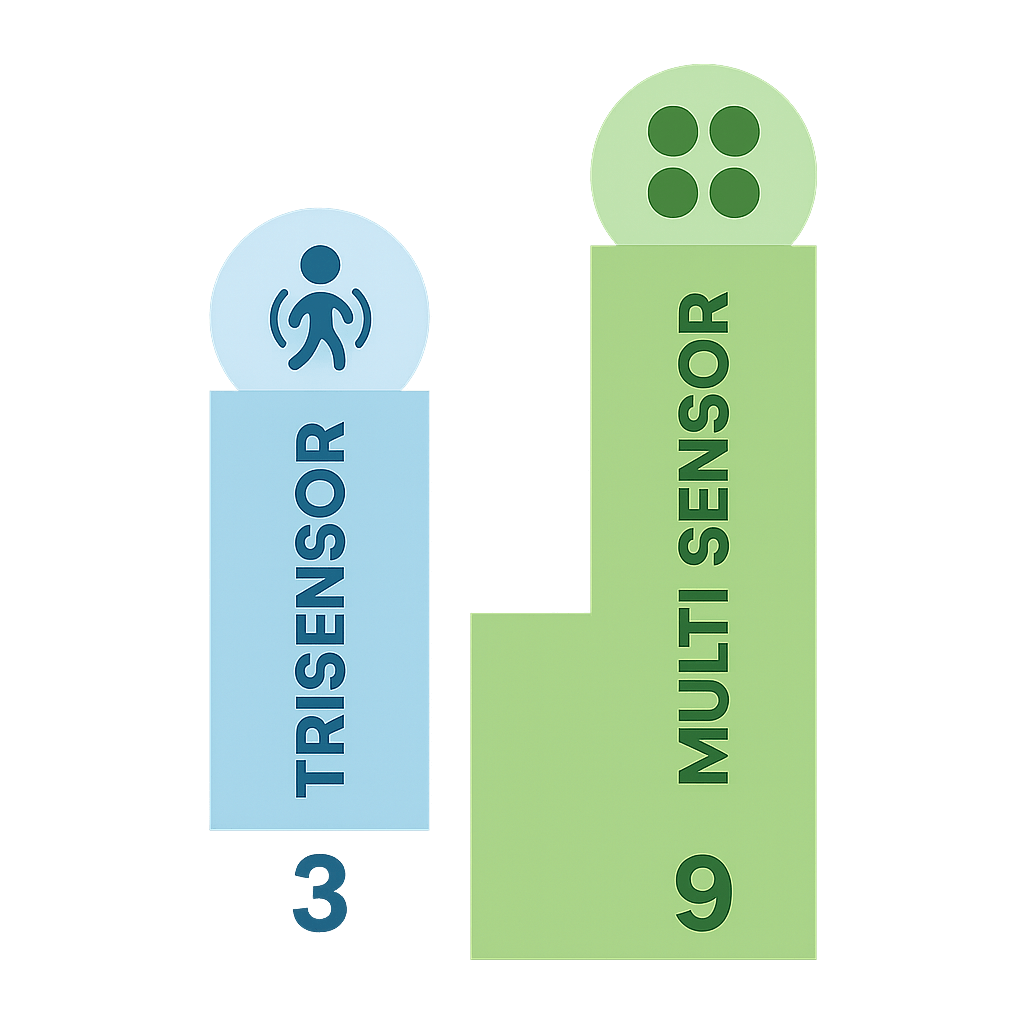
Installation and Power Considerations
- TriSensor offers four flexible mounting options including corner, shelf, or recessed installation
- Multi Sensor requires mains power and dedicated wall mounting for optimal display visibility
- Battery operation versus permanent installation affects placement flexibility
The display capabilities reveal another crucial difference. The Multi Sensor's TFT screen provides immediate visual feedback, eliminating guesswork about environmental conditions. However, this always-on display requires consistent power supply and careful positioning for optimal viewing angles. Conversely, the TriSensor's minimalist approach relies entirely on Z-Wave network communication, keeping the device virtually invisible whilst maintaining essential automation functionality.
Smart Home Integration Approaches
- TriSensor focuses on core automation triggers for lighting and climate control
- Multi Sensor provides comprehensive data for health-conscious homeowners
- Display feedback versus invisible operation affects user interaction preferences
- Network efficiency considerations for battery-powered versus mains-powered devices
Real-World Responsiveness: Speed, Accuracy, and Reliability Testing
Response times and accuracy determine whether home sensors enhance or hinder your automation experience. The TriSensor's PIR detect mechanism responds quickly to motion changes, triggering automation within seconds of detection. Its streamlined sensor array minimises processing overhead, ensuring rapid network communication and consistent battery performance over extended periods.
Performance Metrics Comparison
- Motion detection range: TriSensor covers 7.5 metres, Multi Sensor provides similar coverage with additional accuracy data
- Temperature precision: Both achieve ±1°C accuracy with different response characteristics
- Network reliability varies based on power source and processing demands
- Battery life considerations affect long-term maintenance requirements
The Multi Sensor's comprehensive approach introduces complexity that can affect response times. Processing data from nine sensors whilst maintaining display updates requires more computational resources. However, this investment provides unprecedented insight into environmental conditions, including air quality trends that simple sensors cannot detect. The trade-off between comprehensive monitoring and immediate responsiveness becomes particularly relevant in security-focused applications where rapid infrared motion detectors response is paramount.
TriSensor Advantages: When Less Delivers More
The TriSensor's minimalist philosophy delivers significant practical advantages for many smart home scenarios. Its ultra-compact design enables placement in locations impossible for larger sensors, whilst battery operation eliminates wiring constraints. The focused three-sensor approach reduces complexity, minimises potential failure points, and ensures reliable automation triggers without overwhelming users with excessive data.
Key Practical Benefits
- Discreet installation options maintain aesthetic appeal
- Extended battery life reduces maintenance frequency
- Simplified setup process suitable for beginners
- Flexible placement without electrical access requirements
- Cost-effective solution for essential automation needs
However, the streamlined approach inherently limits environmental monitoring scope. Users seeking comprehensive air quality data or detailed environmental feedback may find the TriSensor's capabilities insufficient for health-conscious automation scenarios.
Multi Sensor Strengths: Comprehensive Monitoring at a Cost
The Multi Sensor excels in scenarios demanding comprehensive environmental intelligence. Its nine-sensor array provides unparalleled insight into indoor air quality, including PM2.5 particulate matter, CO2 levels, and volatile organic compounds. The integrated display eliminates reliance on smartphone apps for immediate environmental feedback, making it ideal for health-conscious households.
Advanced Monitoring Capabilities
- Air quality assessment supports health and wellness automation
- Real-time display provides immediate environmental feedback
- Comprehensive sensor coverage reduces need for multiple devices
- Professional-grade monitoring suitable for sensitive environments
The comprehensive approach introduces challenges including increased installation complexity, higher power consumption, and potential information overload for users preferring simplicity. The larger form factor also limits placement options compared to ultra-compact alternatives.
Matching Sensors to Lifestyles: From Minimalists to Data Enthusiasts
Choosing between these home sensors requires understanding your specific automation priorities and lifestyle preferences. Renters benefit from the TriSensor's battery operation and flexible mounting options, avoiding permanent electrical modifications. Its discreet profile maintains property aesthetics whilst providing essential automation triggers for lighting and climate control.
Lifestyle-Based Sensor Selection
- Minimalists: TriSensor provides essential functionality without complexity
- Families: Multi Sensor offers air quality monitoring for health-conscious parenting
- Tech enthusiasts: Comprehensive sensor data satisfies detailed automation requirements
- Budget-conscious users: Focused functionality versus extensive feature sets
Data enthusiasts gravitate towards the Multi Sensor's comprehensive environmental intelligence. The nine-sensor array supports sophisticated automation scenarios including air quality alerts, detailed climate control, and environmental health monitoring. Professional installations and health-conscious households particularly benefit from the extensive monitoring capabilities.
Installation Environment Considerations
- Rental properties favour battery-powered, non-permanent solutions
- Permanent installations can accommodate mains-powered comprehensive monitoring
- Room aesthetics influence sensor visibility preferences
- Technical expertise affects setup complexity tolerance
Consider your long-term automation goals when selecting between focused simplicity and comprehensive monitoring. The TriSensor suits users wanting reliable, essential automation triggers, whilst the Multi Sensor serves those seeking detailed environmental intelligence for health-focused smart home implementations.
Making the Smart Choice: Your Environmental Monitoring Decision
The choice between these exceptional home sensors ultimately depends on your specific automation philosophy and practical requirements. The TriSensor delivers focused functionality through three essential sensors, prioritising simplicity, flexibility, and long-term reliability. Its ultra-compact design and battery operation make it ideal for users wanting invisible automation triggers without complexity.
Decision Framework
- Assess your monitoring priorities: essential triggers versus comprehensive data
- Consider installation constraints: battery flexibility versus mains power requirements
- Evaluate aesthetic preferences: discreet sensors versus visible displays
- Match technical complexity to your comfort level and expertise
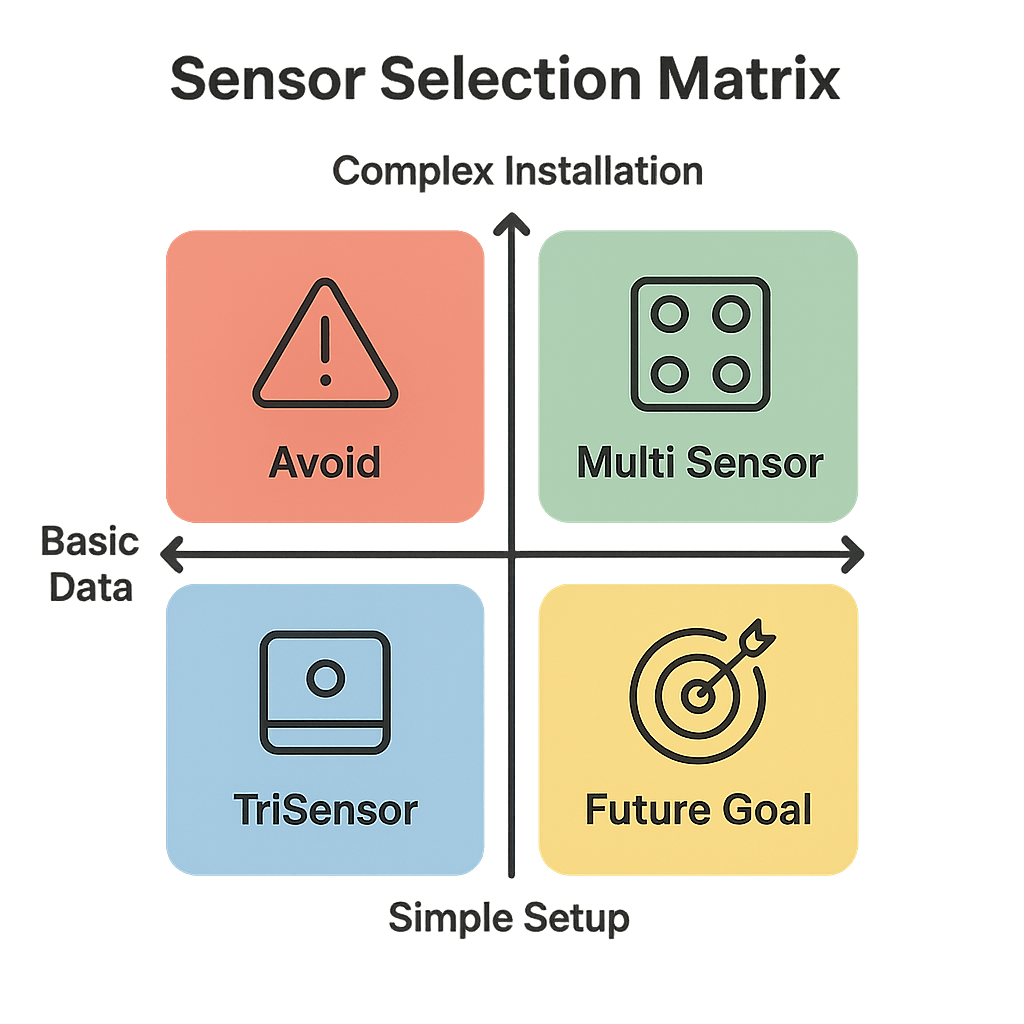
The Multi Sensor serves users demanding comprehensive environmental intelligence with its nine-sensor array and real-time display feedback. Both solutions excel within their intended applications, ensuring your smart home automation goals are met through reliable, professional-grade environmental monitoring.
Your Perfect Sensor Match Awaits
Both the Aeotec TriSensor and MCO Home Multi Sensor excel in their respective approaches to smart home environmental monitoring. The TriSensor delivers essential automation data through a discreet, versatile package that fits anywhere, making it ideal for users who value simplicity and flexibility. Meanwhile, the Multi Sensor provides comprehensive environmental intelligence with its nine-sensor array and informative display, perfect for those who want detailed insights into their indoor air quality and overall home environment.
The 'better' choice ultimately depends on your specific needs and preferences. Consider whether you prioritise discreet placement and simplicity, or comprehensive monitoring and detailed feedback. Think about your installation requirements, desired data depth, and how each sensor's capabilities align with your smart home automation goals.
Ready to enhance your smart home with the perfect environmental sensor? Browse both the Aeotec TriSensor and MCO Home Multi Sensor to discover which monitoring solution will transform your home automation experience.










